Kahvalti: the most important meal
Kahvalti can be translated to English as “breakfast”, but don’t think it is just any breakfast: it’s Turkish breakfast. Kahvalti consists of endless bread and tea, a vast variety of cheeses, hams and jams and things that complement the bread. Usually, you also eat eggs (fried or boiled), menemen (eggs with tomatoes and peppers) gozleme(thin bread with a filling of melted cheese, potato or meat) or pisi (fried dough).
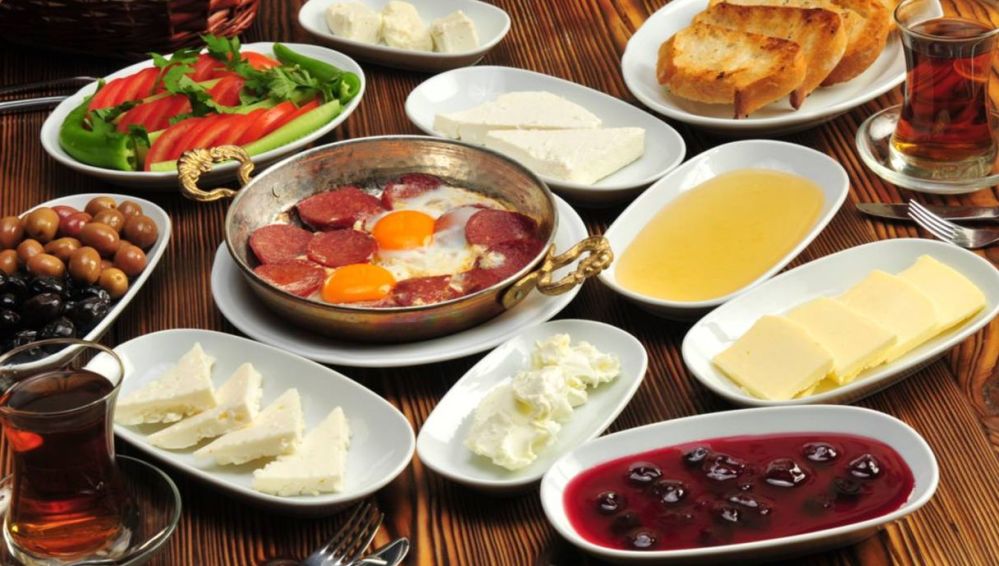
Sincerely, this is one of my favorite parts of Turkish cuisine. It’s greatto go have a late breakfast on a Saturday or Sunday morning and eat enough for the whole day! Besiktas and Ortakoy have excellent places for breakfast, but if you fancy a Bosphorus view and a top breakfast, head to Bebek.
Snacks
Many people call Simit “the Turkish bagel”, even though I have no idea why. I know it’s round with a whole in the middle, but it has nothing to do with a bagel! Simit is how million of Turks start their days. Circular bread typically encrusted with sesame seeds that will make you full even before finishing it.
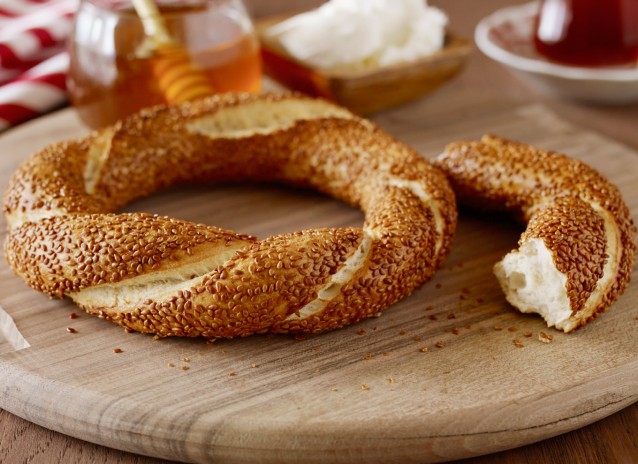
Borek is a favorite and it comes in many different flavors, shapes and forms. In its essence it’s a baked filo pastry with several fillings. Most commonly it has cheese inside, but it can also have potatoes, spinach or meat (or everything together). You can also get some without any filling and where you’ll put powder sugar on top, for a sweet version.
Meze: How to properly start a meal
Meze is the Turkish word for starters, several mini-dishes you have before the main meal. These are usually served in fish restaurants and accompanied by raki (the national drink). There are many different kinds but here are my favorites: Feta cheese; Grilled eggplant salad; Egg plant puree, calamari.

Çorba: The Soups
Turkish cuisine has several soups being the lentil, chicken soup with almonds and yogurt soup the most famous. Lentil soup is really fulfilling and a great way to stay warm in the winter. I’ve never tried the yogurt soup – Yayla (I’m not a big fan of yogurt besides for breakfast time…) but I know it comes from the black sea side and the ingredients are: rice, yogurt, and an egg yolk.
Kebabs & other the masterpieces of Turkish cuisine
Kebab: oh boy, where to begin… there are probably hundreds of different kebabs so I’ll just stick to the best ones (and most famous): Adana (spicy) and Urfa (not spicy) Kebab – kebab with hand-minced meat mixed with chili on a flat wide metal skewer.Iskender kebab is long strips of lamb cooked in tomato sauce and served over rice and pita bread with yogurt.
Çop sis (small skewer kebab) and Tavuk sis (chicken) are also very famous and delicious.

Döner is a typical slow cooked meat (which everyone in Europe calls kebab) sandwich, made with chicken, lamb, or beef and served with vegetables. The same meat is also used to make durum (this one is roled on a wrap).

Kofte is another problem; there are dozens of varieties… Kofte is basically meatballs; you can have them on bread, as a dish or in many forms. İçli köfte is amazing – Roasted minced meat, onion and walnut with a coating of wheat, flour, egg and it’s fried.
Manti is the dish that I can’t eat. I don’t know why but this just kills me. But at the same time I feel like I have to mention it because it’s such a favorite!Turkish pasta folded in triangles of dough filled with minced meat. It is typically served hot topped with yogurt and melted butter and spices such as oregano, dried mint, and red pepper powder. The dish comes from Kayseri, close to Cappadocia.
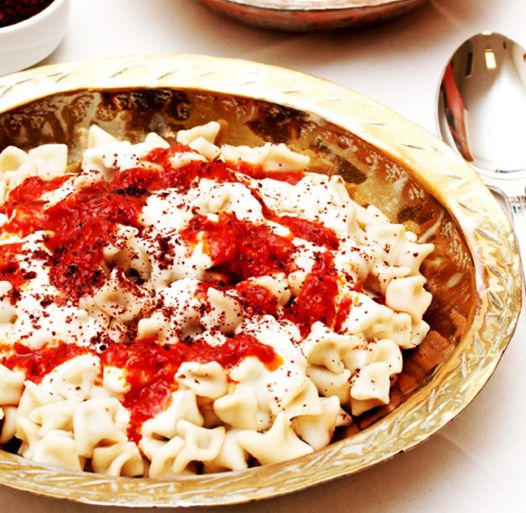
Lahmacun is what tourist call “Turkish pizza”: thin dough topped with spiced minced meat, tomato, pepper, onion or garlic. You usually put tomatoes and herbs inside, squeeze lemon juice, role it and eat it has a wrap.

I love Pide, it’s so simple but so good: baked bread with cheese melting everywhere. It can also have other fillings but when it’s baked on rustic ovens it’s just perfect!
The fish!
I love fish and fortunately Turkey is a country surrounded by sea, so they have some traditional fish dishes. The most famous is Balik Ekmek (fish bread in English). It’s sold mainly in Eminonu. Coming from the Black Sea there’s also a very delicious fish dish:Hamsi Tava (fried anchovies) and Hamsi Buğulama (baked anchovies with vegetables).

The ones for the veggies
Dolma is the name used for stuffed vegetables. Many vegetables are stuffed, most typically green peppers (biber dolması), eggplants, tomatoes, or zucchini/courgettes (kabak dolması), vine leaves (yaprak dolması). When you have vine leaves stuffed with rice it’s called Sarma Dolam.
Mercimek Köftesi are vegetarian “meat balls” made from lentils, bulgur, and chopped vegetables which are a loved Turkish dish.
Bulgur was a major discovery for me, now I truly love it, especially as side dish (to make pilav).

Finishing on a sweet note: Desserts
This is another hard one, there are so many!! But between the most delicious is Baklava: crispy pastry with pistachio and a sugar syrup (don’t order a lot just because they seem small, a small piece of this is a bomb of sweetness)
Then there’s all the milk based desserts: muhallebi, sütlaç (rice pudding), keşkül,kazandibi (meaning the bottom of “kazan” because of its burnt surface), and tavuk göğsü (a sweet, milk pudding dessert, to which very thinly peeled chicken breast is added to give a chewy texture).
Finally there’s Kunefe (best served in kebab houses) a cheese desert, Helva andTurkish Delights.

Last but really not the least: the drinks
Turks have the deepest love for their drinks. There’s not a day that they don’t drink tea (black tea) and a week where they don’t drink Ayran (yogurt with water and salt) or Turkish Coffee.
Tea (çay in Turkish) is everywhere, offered all the time and most people drink more than 10 cups per day! And finally: Raki (yeni raki is the most famous), the king of the drinks. This liquor with anis flavor is always present when there are social encounters or fish on the table.

Turkish Coffee
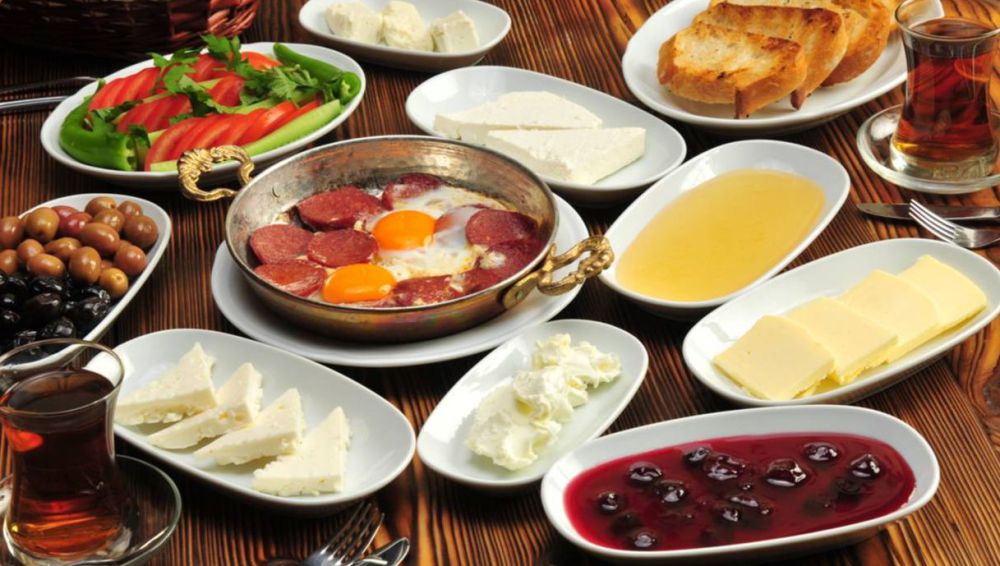
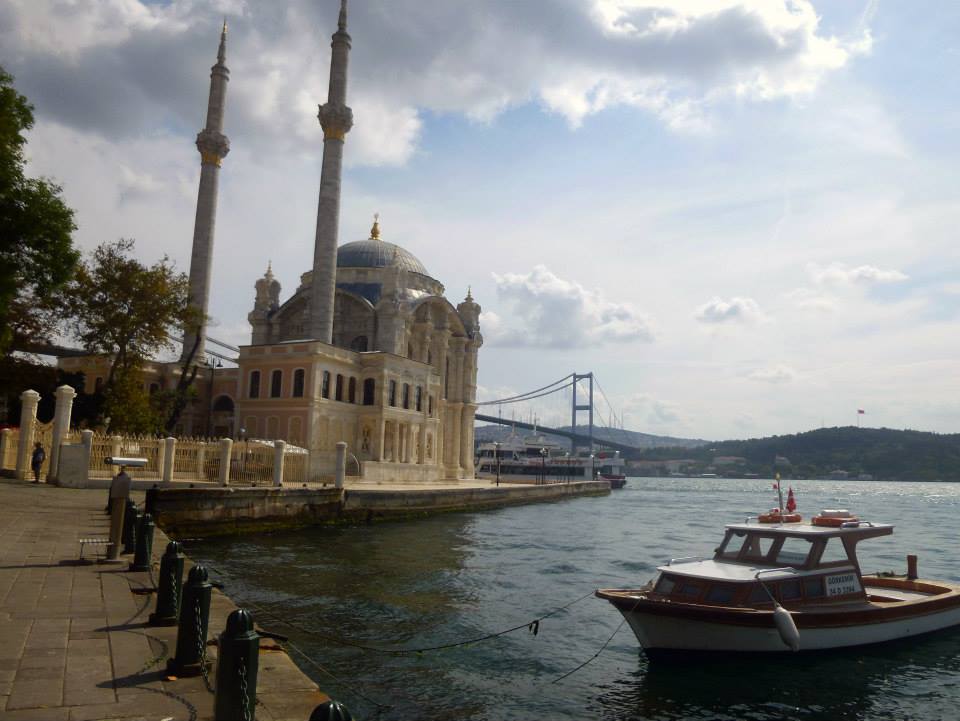
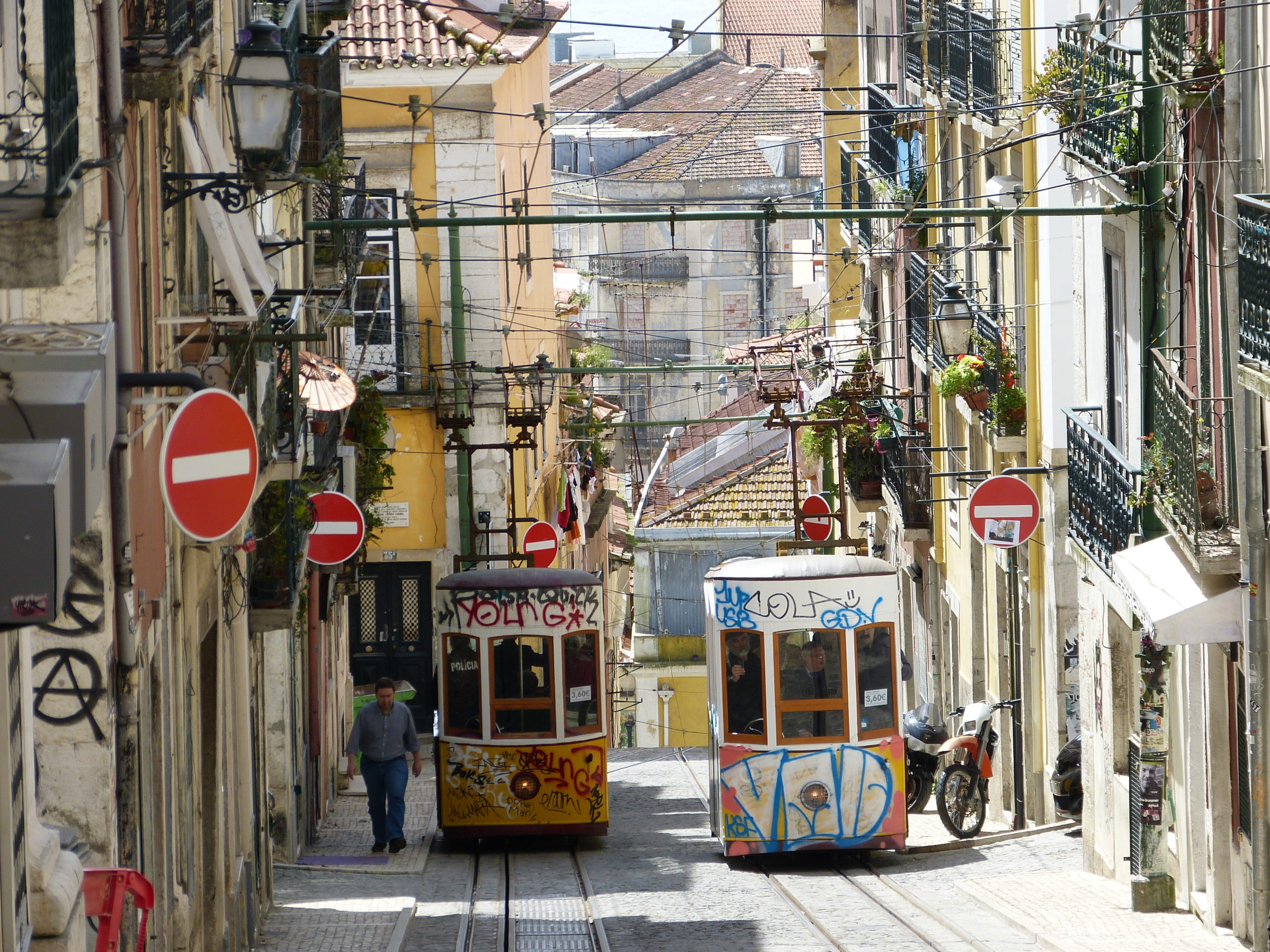
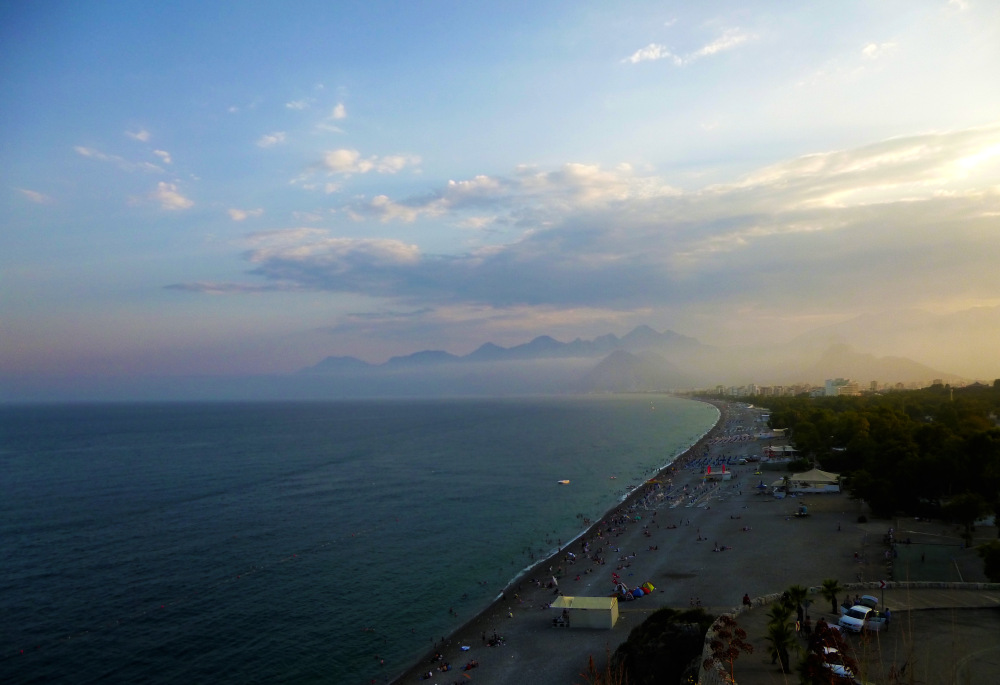

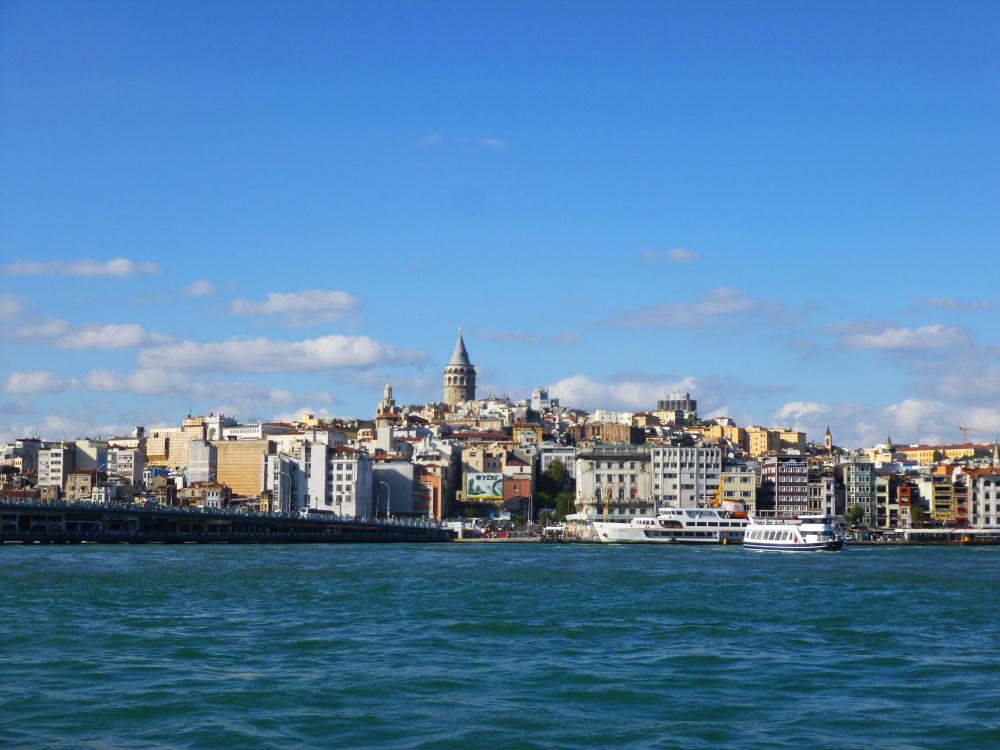
One Comment
Pingback: